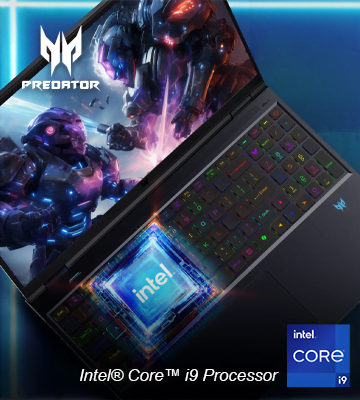Buying a monitor in Nepal used to be simple. You’d walk into an electronics shop, check the screen size and price, and that was it. But now, things have changed. You see technical terms like 60Hz, 144Hz, even 240Hz, and you start wondering what these numbers mean, and whether they matter.
This blog clears it up. Especially if you’re in Nepal, buying a monitor isn’t just about specs. You also have to think about availability, internet quality, your PC’s performance, and your budget. So let’s break everything down clearly and simply.
What Is Refresh Rate, and Why Does It Matter?
Refresh rate means how many times your monitor can change the image on the screen every second. It’s measured in something called Hertz (Hz).
A 60Hz monitor changes the image 60 times per second.
A 144Hz monitor changes the image 144 times per second.
Now, why does this matter?
When you’re doing normal things like watching videos or scrolling through Facebook, a 60Hz screen works fine. But if you play games or move things quickly on your screen, you may notice the difference.
On a 60Hz monitor, fast movements can look a bit blurry or slow. On a 144Hz monitor, everything looks much smoother and more natural. The motion feels quicker, and things respond faster when you move your mouse or press a key.
Think of it like flipping pages in a photo book. The faster you flip the pages, the smoother the motion looks. That’s exactly what a higher refresh rate does on your screen.
The 60Hz Monitor: Still Common, Still Reliable
Let’s talk about what most people in Nepal use. The 60Hz monitor is everywhere in homes, offices, cyber cafes, schools, and colleges. If you’re someone who mainly uses a computer for:
Watching YouTube
Browsing websites
Doing assignments
Attending Zoom classes
Writing or reading documents
Then, a 60Hz monitor is more than enough.
You can easily find 60Hz monitors in Nepal, with prices usually between Rs. 14,000 to Rs. 40,000, depending on screen size and brand.
Also, you don’t need a powerful computer to use a 60Hz monitor. Even an older laptop with HDMI output works fine.
The 144Hz Monitor: A Big Step Up for Gamers and Editors
Now, let’s talk about 144Hz monitors. These are mostly preferred by people who play games or work with video editing. If you’ve ever played games like Valorant, CS: GO, Apex Legends, or Call of Duty, then you’ll notice a clear difference between 60Hz and 144Hz.
On a 144Hz screen, movements feel smoother. Aiming feels faster. Input lag is reduced. In competitive games, this gives you a slight advantage, especially when reacting quickly.
Video editors also prefer higher refresh rate monitors for timeline scrubbing and smoother previewing of fast cuts. Even normal tasks like scrolling in a browser or dragging files feel more responsive on a 144Hz screen.
But this upgrade isn’t free. A decent 144Hz monitor in Nepal starts at around Rs. 40,000 and can go up to Rs. 65,000 or more. Also, your PC must support it. If your graphics card cannot push enough frames per second (FPS), then even a 144Hz monitor will look like a 60Hz one.
You’ll need at least an NVIDIA GTX 1650 or an AMD RX 6500 XT for many games to reach 144 FPS in medium settings. And make sure you use the right cable, DisplayPort or HDMI 2.0, to get the full refresh rate. Older HDMI cables can limit your screen to 60Hz.
Practical Factors to Consider in Nepal
While refresh rate matters, there are other things you need to keep in mind when deciding between 60Hz and 144Hz in Nepal:
1. Internet Stability
A fast refresh rate won’t help much if your game keeps lagging due to poor internet. A 144Hz monitor can give you smooth visuals, but high ping and packet loss from unreliable internet cancel out the benefit. Fortunately, in cities like Kathmandu, Lalitpur, and Chitwan, fibre internet (like Vianet, Worldlink, or Subisu) is improving.
2. Electricity Supply
Power cuts are less frequent now, but still common in some rural or semi-urban areas. If you live in such places, buying a UPS along with your monitor is a smart idea, especially for expensive hardware.
3. Availability of Parts
If something goes wrong with your monitor, getting it repaired or replaced can be difficult. Choose brands with warranty and service centers in Nepal; brands like ASUS, Acer, and Dell monitors are safer options than buying unknown ones through grey market imports.
Which One Should You Buy?
If your daily use includes browsing, office work, or online classes, go for a 60Hz monitor. You’ll save money and get everything you need.
But if gaming is your main activity, or you’re planning to get into streaming, editing, or content creation, then investing in a 144Hz monitor makes sense. Just make sure your PC can match the performance, or the upgrade won’t show its full effect.
Conclusion
Buying a monitor in Nepal isn’t just about features; it’s about how well your setup works with your electricity, internet, and usage needs. For most users, 60 Hz is perfectly fine. But if you’re looking for smoother visuals and play games seriously, 144 Hz is worth the extra money, as long as your PC supports it.
In short:
60Hz = practical, affordable, and enough for normal tasks
144Hz = smoother, faster, better for gamers and creative users
Still confused? Visit Online IT, and our professionals will help you choose the right monitor for your needs.




